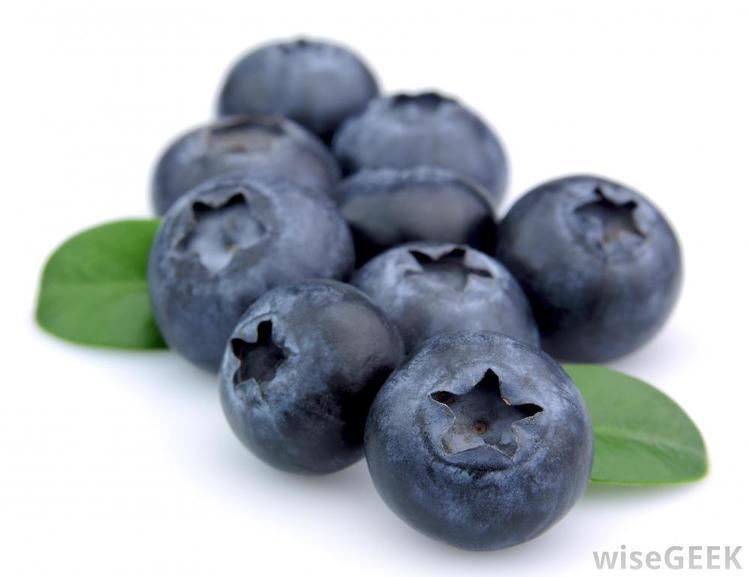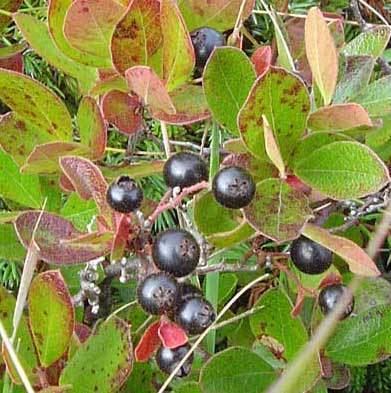 | ||
Similar Blueberry, Water, Bilberry, Lingonberry, Boysenberry | ||
Garden huckleberry aka solanum nigrum aka wonder berry
Huckleberry is a name used in North America for several plants in the family Ericaceae, in two closely related genera: Vaccinium and Gaylussacia.
Contents
- Garden huckleberry aka solanum nigrum aka wonder berry
- Transplanting a huckleberry bush vaccinium elliottii
- Nomenclature
- Edibility
- Gaylussacia
- Vaccinium
- Nutrients and phytochemicals
- Use as food or traditional medicine
- Use in slang
- References

Transplanting a huckleberry bush vaccinium elliottii
Nomenclature

The name 'huckleberry' is a North American variation of the English dialectal name variously called 'hurtleberry' or 'whortleberry' /ˈwɜːrtəlˌbɛrɪ/ for the bilberry. In North America the name was applied to numerous plant variations all bearing small berries with colors that may be red, blue or black. It is the common name for various Gaylussacia species, and some Vaccinium species, such as Vaccinium parvifolium, the red huckleberry, and is also applied to other Vaccinium species which may also be called blueberries depending upon local custom, as in New England and parts of Appalachia.
Edibility

The fruit of the various species of plant called huckleberries is generally edible and versatile in foods. The berries are small and round, 5–10 mm in diameter, and look like large dark blueberries. In taste, the berries range from tart to sweet, with a flavor similar to that of a blueberry, especially in blue- and purple-colored varieties. However, many kinds of huckleberries have a noticeable tart taste, different from blueberries, and some have noticeably larger seeds. Huckleberries are consumed by many animals, including bears, birds, deer, and humans.

The 'garden huckleberry' (Solanum scabrum) is not a true huckleberry, but is instead a member of the nightshade family.
Gaylussacia
Four species of huckleberries in the genus Gaylussacia are common in eastern North America, especially G. baccata, also known as the black huckleberry.
Vaccinium
From coastal Central California to southern Washington and British Columbia, the red huckleberry (Vaccinium parvifolium) is found in the maritime-influenced plant community. In the Pacific Northwest and mountains of Montana and Idaho, this huckleberry species and several others, such as the black Vaccinium huckleberry (V. membranaceum) and blue (Cascade) huckleberry (V. deliciosum), grow in various habitats, such as mid-alpine regions up to 11,500 feet elevation, mountain slopes, forests, or lake basins. The plant grows best in damp, acidic soil having volcanic origin, attaining under optimal conditions heights of 1.5 to 2 m (4.9 to 6.6 ft), usually ripening in mid-to-late summer or later at high elevations.
Where the climate is favorable, certain species of huckleberry, such as V. membranaceum, V. parvifolium and V. deliciosum, are used in ornamental plantings.
Nutrients and phytochemicals
Only limited research has been applied to define the content of essential nutrients in huckleberries, showing none with high content.
Two huckleberry species, V. membranaceum and V. ovatum, were studied for phytochemical content, showing that V. ovatum had greater total anthocyanin and polyphenols than did V. membranaceum. Each species contained 15 anthocyanins (galactoside, glucoside, and arabinoside of delphinidin, cyanidin, petunidin, peonidin, and malvidin) but in different proportions.
Use as food or traditional medicine
Huckleberries were traditionally collected by Native American and First Nations people along the Pacific coast, interior British Columbia, and Montana for use as food or traditional medicine.
Huckleberries can be processed into numerous food products including juice, tea, soup, syrup, jam, pudding, candy, pie, muffins, pancakes, and salad dressings. Traditional medical applications included treating pain, heart ailments, and infections.
Use in slang
Huckleberries hold a place in archaic American English slang. The tiny size of the berries led to their use as a way of referring to something small, often affectionately as in the lyrics of Moon River. The phrase "a huckleberry over my persimmon" was used to mean "a bit beyond my abilities". "I'm your huckleberry" is a way of saying that one is just the right person for a given job. The range of slang meanings of huckleberry in the 19th century was fairly large, also referring to significant persons or nice persons.
